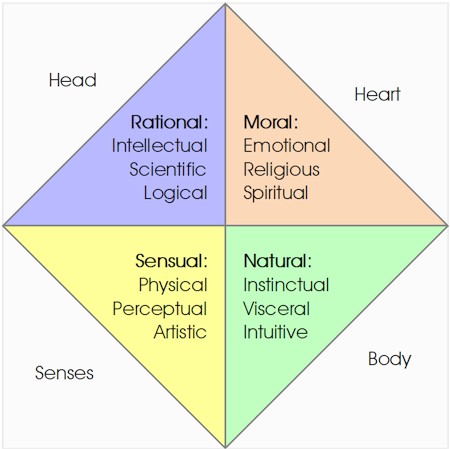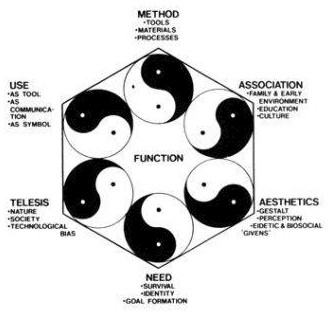 Sketch of Dr House (Hugh Laurie) by Dutch artist Jessie145 What It All Means This Week: Monbiot’s Global Warming Solution is Already Out of Reach: George Monbiot’s Heat prescribed a radical but feasible way to prevent the more catastrophic effects of global warming, based on years of dedicated research. When I reviewed the book I praised Monbiot for his imaginative plan, but doubted it would ever be implemented. Now Monbiot has acknowledged that it won’t, in an editorial full of desperation and despair. ‘Psychopathic’ Chinese Corporatists Tell It Like It Is: Unlike the deceitful corporatists of affluent nations, Chinese corporations own up to their psychopathy: They put toxic ‘protein’ in pet food because they can get away with it, and because it’s profitable. They know it kills, and has zero nutritional value. They likewise poison cosmetics, household products and human foods, including baby foods. That’s their job: make it cheap, maximize profit for shareholders. No conscience necessary or permitted. In affluent nations, corporatists clamour for deregulation, and bribe and bully corrupt governments and regulatory agencies not to enforce existing laws, and to grant them immunity from prosecution by the public, so that they can do the same. They’re just doing their job. What will it take before the free-market lovers realize the madness of the modern corporate model? Why We Don’t Act Until It Is Too Late: Today’s NYT has two editorials that merit some reading between the lines. The first, on the US health care system (available only to premium readers) argues that as dysfunctional as the US health care system is, it is human nature not to fix it until it is utterly broken. The second argues that we can and should take some relatively simple technological steps that will go a long way to addressing global warming, easily and painlessly (the report referred to is here). Of course, not only is it our human nature to do nothing about global warming until we see its horrific effects (just as we did nothing to prevent New Orleans from the inevitable Katrina until it was too late) — it is our human nature to do the easy painless stuff and then convince ourselves (although the report says the opposite) that that is enough. Such a strange species we are, doing things that are opposed to our own long-term self-interest (and not doing things that are essential to it). Canada’s Version of ‘Rendition’: The Canadian government justifiably complained when Canadian citizens like Maher Arar were kidnapped by US Homeland Security and transported to foreign torture centres. But we’re learning that Canadian authorities’ hands are far from clean when it comes to ‘rendition’ activities. We’ve learned that the Canadian RCMP was complicit in the Arar affair, though the cover-up continues despite a government apology and payment to Arar (no charges of negligence, incompetence or malicious prosecution have been laid against the RCMP perps who set up Arar). And now we learn that Canada’s ‘peacekeepers’ in Afghanistan have been turning their captives over to Afghan torture squads, with the full knowledge of the Canadian Minister of Defence Gordon O’Connor and the Canadian chief of defence staff Rick Hillier. This is a blatant violation of the Geneva Convention, and puts Canadian troops in enormous danger (not to mention blackening the reputation of Canadian citizens). The 100 Mile Diet: Don’t Tell Me, Show Me: Novelist Barbara Kingsolver has often used her stories to convey an activist message, and we know how much more powerful a story can be than an editorial. Now, she’s written a non-fiction book on eating locally, but in her own style, she presents it as a personal story of her family (and others’) struggle to live on locally-raised food alone, and avoids the tendency to prescribe action for readers. As in her novels, her way of making her point is by showing what’s possible, rather than telling what’s necessary. Environmentally Friendly Tissues: Kleerkut lists the brands of toilet paper (anyone learned the Sheryl Crow ‘one square’ trick yet?) and tissues that don’t come from ravaging old-growth forests. Thanks to Dale Asberry for the link. Thought for the Week: There are some strange synchronicities occurring in my life these days, that I’ll speak more about as they emerge in the next few weeks. But Andrew Campbell has just sent me a passage that he ascribes to Jung that speaks of synchronicity, so it is naturally the thought for the week: I am about to publish a little book on one symbolic motif only and you will find it hair-raising. I had to study not only Chinese and Hindu but Sanskrit literature and Medieval Latin manuscripts, which are not even known to specialists, so that one must go to the British Museum to find the references. Only when you possess that apparatus of parallelism can you begin to make diagnoses and say that this dream is organic and that one is not. Until people have acquired that knowledge I am just a sorcerer. They say it is un tour de passe-passe. They said it the Middle Ages. They said, ‘How can you see that Jupiter has
satellites?’ If you reply that you have a telescope, what is a telescope to a medieval audience? I do not mean to boast about this. I am always perplexed when my colleagues ask: ‘How do you establish such a diagnosis or come to this conclusion?’ I reply: ‘I will explain if you will allow me to explain what you ought to know to be able understand it’. I experienced this myself when the famous Einstein was Professor at Zurich. I often saw him, and it was when he was beginning to work on his theory of relativity. He was often in my house, and I pumped him about his relativity theory. I am not gifted in mathematics and you should have seen all the trouble the poor man had to explain relativity to me. He But one day he asked me something about psychology. Special knowledge is a terrible disadvantage. It leads you in way too far, so that you cannot explain any more. You might allow me to talk to you about seemingly elementary things, but if you will accept them I think you will understand why I do reach such and such conclusions. I am sorry that we do not have more time and that I cannot tell you everything. When I come dreams I have to give myself away and to risk your thinking me a perfect fool, because I am not able to put before you all the historical evidence which led to my conclusions. I should have to quote bit after bit from Chinese and Hindu literature, texts and all the things that you do not know. How could you? I am working with specialists in other fields of Psychology can learn no end from old civilizations particularly from India and China. A former President of the British People may say: What a fool to say causality is only relative. But look at modern physics! The East bases its thinking and it evaluation of facts on another principle. We have not even a word for that principle. The East naturally has a word for it, but we do not understand it. The Eastern word is Tao. My friend McDougal has a Chinese student, and he asked him. – ‘What exactly do you mean by ‘Tao?’ Typically Western! The Chinese boy explained what Tao is and he replied: ‘I do not understand yet’ The Chinese went out to the balcony and said. ‘What do you see?” I see a street and houses and people walking and tramcar passing’. ‘What more?’ ‘There is a hill’. ‘What more?” Trees’ ‘What more?” The wind is blowing’. The Chinese threw up his arms and said: ‘That is Tao’. There you are. Tao can be anything. I use another word to designate it, but it is poor enough. I call it synchronicity. The Eastern mind, when it looks at an ensemble of facts, accepts the small quantities. You look, for instance, at this present gathering of people, and you say: ‘Where do they come from? Why should they come together?’ The Eastern mind is not at all interested in that. It says: ‘What does it mean that these people are together?’ That is not a problem for the Western mind. You are interested in what you come here for and what you are doing here. Not so the Eastern mind; it is interested in being together. It is like this: you are standing on the sea-shore and the waves wash up an old hat, an old box, a shoe, a dead fish, and there they lie on the shore. You say: ‘Chance, nonsense!’ The Chinese mind asks: ‘What does it mean that these things are together?’ The Chinese mind experiments with that being together and coming together at the right moment, and it has an experimental method which is not known in the West, but which plays a large role in the philosophy of the East. It is a method of forecasting possibilities. – This method was formulated in 1143 B.C. When people ask me “How can you possibly believe that our civilization is in its last century?” I try to tell them. I point them to my Save the World Reading List to explain what research and study I have done on the subject (my intellectual knowledge). I point them to all my writings, in sequence, on the environment and the state of the world that let me think out loud to formulate what I believe (my emotional knowledge). I take them out for a walk in the forest next door and let them see and feel and smell and taste and hear what all-life-on-Earth is telling us (my sensory knowledge). And I confess that instinctively, too, I know this to be true (though that knowledge cannot be imparted because to do so would require others to trusts my instincts). It is the synchronicity of these four types of terrible knowledge, all converging on the same ghastly truth about our future, that has led meto this conclusion. And then I shrug and say that I can’t explain it any better than that. I just know. I have been ‘led in so far I cannot explain any more’. |
Navigation
Collapsniks
Albert Bates (US)
Andrew Nikiforuk (CA)
Brutus (US)
Carolyn Baker (US)*
Catherine Ingram (US)
Chris Hedges (US)
Dahr Jamail (US)
Dean Spillane-Walker (US)*
Derrick Jensen (US)
Dougald & Paul (IE/SE)*
Erik Michaels (US)
Gail Tverberg (US)
Guy McPherson (US)
Honest Sorcerer
Janaia & Robin (US)*
Jem Bendell (UK)
Mari Werner
Michael Dowd (US)*
Nate Hagens (US)
Paul Heft (US)*
Post Carbon Inst. (US)
Resilience (US)
Richard Heinberg (US)
Robert Jensen (US)
Roy Scranton (US)
Sam Mitchell (US)
Tim Morgan (UK)
Tim Watkins (UK)
Umair Haque (UK)
William Rees (CA)
XrayMike (AU)
Radical Non-Duality
Tony Parsons
Jim Newman
Tim Cliss
Andreas Müller
Kenneth Madden
Emerson Lim
Nancy Neithercut
Rosemarijn Roes
Frank McCaughey
Clare Cherikoff
Ere Parek, Izzy Cloke, Zabi AmaniEssential Reading
Archive by Category
My Bio, Contact Info, Signature Posts
About the Author (2023)
My Circles
E-mail me
--- My Best 200 Posts, 2003-22 by category, from newest to oldest ---
Collapse Watch:
Hope — On the Balance of Probabilities
The Caste War for the Dregs
Recuperation, Accommodation, Resilience
How Do We Teach the Critical Skills
Collapse Not Apocalypse
Effective Activism
'Making Sense of the World' Reading List
Notes From the Rising Dark
What is Exponential Decay
Collapse: Slowly Then Suddenly
Slouching Towards Bethlehem
Making Sense of Who We Are
What Would Net-Zero Emissions Look Like?
Post Collapse with Michael Dowd (video)
Why Economic Collapse Will Precede Climate Collapse
Being Adaptable: A Reminder List
A Culture of Fear
What Will It Take?
A Future Without Us
Dean Walker Interview (video)
The Mushroom at the End of the World
What Would It Take To Live Sustainably?
The New Political Map (Poster)
Beyond Belief
Complexity and Collapse
Requiem for a Species
Civilization Disease
What a Desolated Earth Looks Like
If We Had a Better Story...
Giving Up on Environmentalism
The Hard Part is Finding People Who Care
Going Vegan
The Dark & Gathering Sameness of the World
The End of Philosophy
A Short History of Progress
The Boiling Frog
Our Culture / Ourselves:
A CoVid-19 Recap
What It Means to be Human
A Culture Built on Wrong Models
Understanding Conservatives
Our Unique Capacity for Hatred
Not Meant to Govern Each Other
The Humanist Trap
Credulous
Amazing What People Get Used To
My Reluctant Misanthropy
The Dawn of Everything
Species Shame
Why Misinformation Doesn't Work
The Lab-Leak Hypothesis
The Right to Die
CoVid-19: Go for Zero
Pollard's Laws
On Caste
The Process of Self-Organization
The Tragic Spread of Misinformation
A Better Way to Work
The Needs of the Moment
Ask Yourself This
What to Believe Now?
Rogue Primate
Conversation & Silence
The Language of Our Eyes
True Story
May I Ask a Question?
Cultural Acedia: When We Can No Longer Care
Useless Advice
Several Short Sentences About Learning
Why I Don't Want to Hear Your Story
A Harvest of Myths
The Qualities of a Great Story
The Trouble With Stories
A Model of Identity & Community
Not Ready to Do What's Needed
A Culture of Dependence
So What's Next
Ten Things to Do When You're Feeling Hopeless
No Use to the World Broken
Living in Another World
Does Language Restrict What We Can Think?
The Value of Conversation Manifesto Nobody Knows Anything
If I Only Had 37 Days
The Only Life We Know
A Long Way Down
No Noble Savages
Figments of Reality
Too Far Ahead
Learning From Nature
The Rogue Animal
How the World Really Works:
Making Sense of Scents
An Age of Wonder
The Truth About Ukraine
Navigating Complexity
The Supply Chain Problem
The Promise of Dialogue
Too Dumb to Take Care of Ourselves
Extinction Capitalism
Homeless
Republicans Slide Into Fascism
All the Things I Was Wrong About
Several Short Sentences About Sharks
How Change Happens
What's the Best Possible Outcome?
The Perpetual Growth Machine
We Make Zero
How Long We've Been Around (graphic)
If You Wanted to Sabotage the Elections
Collective Intelligence & Complexity
Ten Things I Wish I'd Learned Earlier
The Problem With Systems
Against Hope (Video)
The Admission of Necessary Ignorance
Several Short Sentences About Jellyfish
Loren Eiseley, in Verse
A Synopsis of 'Finding the Sweet Spot'
Learning from Indigenous Cultures
The Gift Economy
The Job of the Media
The Wal-Mart Dilemma
The Illusion of the Separate Self, and Free Will:
No Free Will, No Freedom
The Other Side of 'No Me'
This Body Takes Me For a Walk
The Only One Who Really Knew Me
No Free Will — Fightin' Words
The Paradox of the Self
A Radical Non-Duality FAQ
What We Think We Know
Bark Bark Bark Bark Bark Bark Bark
Healing From Ourselves
The Entanglement Hypothesis
Nothing Needs to Happen
Nothing to Say About This
What I Wanted to Believe
A Continuous Reassemblage of Meaning
No Choice But to Misbehave
What's Apparently Happening
A Different Kind of Animal
Happy Now?
This Creature
Did Early Humans Have Selves?
Nothing On Offer Here
Even Simpler and More Hopeless Than That
Glimpses
How Our Bodies Sense the World
Fragments
What Happens in Vagus
We Have No Choice
Never Comfortable in the Skin of Self
Letting Go of the Story of Me
All There Is, Is This
A Theory of No Mind
Creative Works:
Mindful Wanderings (Reflections) (Archive)
A Prayer to No One
Frogs' Hollow (Short Story)
We Do What We Do (Poem)
Negative Assertions (Poem)
Reminder (Short Story)
A Canadian Sorry (Satire)
Under No Illusions (Short Story)
The Ever-Stranger (Poem)
The Fortune Teller (Short Story)
Non-Duality Dude (Play)
Your Self: An Owner's Manual (Satire)
All the Things I Thought I Knew (Short Story)
On the Shoulders of Giants (Short Story)
Improv (Poem)
Calling the Cage Freedom (Short Story)
Rune (Poem)
Only This (Poem)
The Other Extinction (Short Story)
Invisible (Poem)
Disruption (Short Story)
A Thought-Less Experiment (Poem)
Speaking Grosbeak (Short Story)
The Only Way There (Short Story)
The Wild Man (Short Story)
Flywheel (Short Story)
The Opposite of Presence (Satire)
How to Make Love Last (Poem)
The Horses' Bodies (Poem)
Enough (Lament)
Distracted (Short Story)
Worse, Still (Poem)
Conjurer (Satire)
A Conversation (Short Story)
Farewell to Albion (Poem)
My Other Sites



 Jason Godesky at
Jason Godesky at  I‘ve been a member of the Green Party for many years, but I’ve frequently duelled with them over their preoccupation with getting candidates elected rather than getting good legislation passed. In Canada, although ‘private members’ bills’ have an uphill battle to get time on the legislative agenda, they are often introduced and occasionally even passed into law.
I‘ve been a member of the Green Party for many years, but I’ve frequently duelled with them over their preoccupation with getting candidates elected rather than getting good legislation passed. In Canada, although ‘private members’ bills’ have an uphill battle to get time on the legislative agenda, they are often introduced and occasionally even passed into law.  What I’m planning on writing about soon:
What I’m planning on writing about soon:







